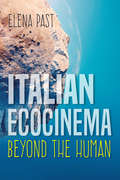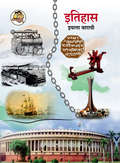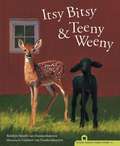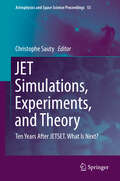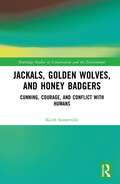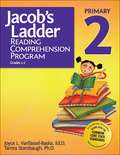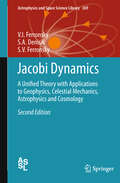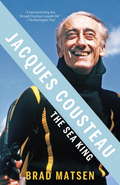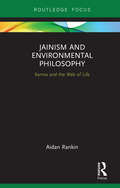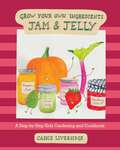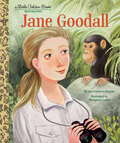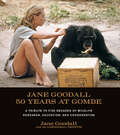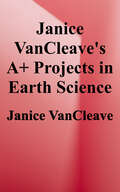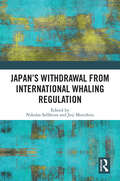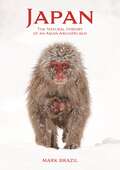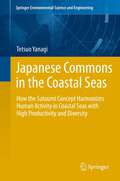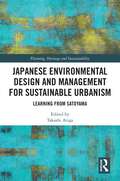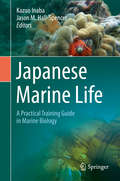- Table View
- List View
Italian Ecocinema Beyond the Human (New Directions in National Cinemas)
by Elena PastEntangled in the hybrid fields of ecomedia studies and material ecocriticism, Elena Past examines five Italian films shot on location and ponders the complex relationships that the production crews developed with the filming locations and the nonhuman cast members. She uses these films—Red Desert (1964), The Winds Blows Round (2005), Gomorrah (2008), Le quattro volte (2010), and Return to the Aeolian Islands (2010)—as case studies to explore pressing enviornmental questions such as cinema's dependence on hydrocarbons, the toxic waste crisis in the region of Campania, and our reliance on the nonhuman world. Dynamic and unexpected actors emerge as the subjects of each chapter: playful goats, erupting volcanoes, airborne dust particles, fluid petroleum, and even the sound of silence. Based on interviews with crew members and close readings of the films themselves, Italian Ecocinema Beyond the Human theorizes how filmmaking practice—from sound recording to location scouting to managing a production—helps uncover cinema's ecological footprint and its potential to open new perspectives on the nonhuman world.
Itihas class 12 - Maharashtra Board: इतिहास इयत्ता बारावी - महाराष्ट्र बोर्ड
by Maharashtra Rajya Pathyapustak Nirmiti Va Abhysakram Sanshodhan Mandal Puneइतिहास इयत्ता बारावी हे पुस्तक महाराष्ट्र राज्य पाठ्यपुस्तक निर्मिती व अभ्यासक्रम संशोधन मंडळ, पुणे यांनी लेखन केले आहे तसेच श्री. विवेक उत्तम गोसावी यांनी हे पुस्तक मराठी भाषेमध्ये प्रकाशित केले आहे. बारावीच्या पाठ्यपुस्तकात आपणास युरोप, अमेरिका, आफ्रिका, आशिया, ऑस्ट्रेलिया या खंडांचा ओझरता इतिहास ज्ञात करून देण्यात आला आहे. युरोपातील प्रबोधन, वसाहतवाद, वसाहतवादाविरुद्ध भारतात आणि विशेषतः महाराष्ट्रात उभारला गेलेला लढा, निर्वसाहतीकरणाची चळवळ, शीतयुद्ध आणि बदलता भारत यांचा अंतर्भाव या पाठ्यपुस्तकात केला आहे.
Itsy Bitsy and Teeny Weeny
by Robbyn Smith van FrankenhuyzenOne spring, as part of their animal rescue work on Hazel Ridge Farm, Gijsbert (Nick) and Robbyn van Frankenhuyzen find themselves caring for a lamb (rejected by its mother) and an orphaned fawn at the same time. They name the lamb Teeny Weeny and the fawn Itsy Bitsy. It's touch-and-go for the first two weeks as the infants' health is precarious and they require almost round-the-clock attention from Robbyn. But as their good health increases, so do their energy levels! Raised as siblings, the two youngsters are inseparable, sharing a playpen in the house, romping together, and just getting into general mischief Eventually, summer comes and goes and moves into fall. And as the seasons change, Itsy Bitsy and Teeny Weeny grow into their true selves, away from "Mother" Robbyn and each other. Nature must take its course and the two animals go their separate ways: One back to a life in the wild and the other on to domestic farm life. Warmly illustrated by wildlife artist Gijsbert van Frankhuyzen, this bittersweet story is another gentle lesson in how nature works . . . on Hazel Ridge Farm. Itsy Bitsy & Teeny Weeny is the fourth entry in the Hazel Ridge Farm wildlife series.
JET Simulations, Experiments, and Theory: Ten Years After JETSET. What Is Next? (Astrophysics and Space Science Proceedings #55)
by Christophe SautyIn 2008, the European FP6 JETSET project ended. JETSET, for Jet, Simulations, Experiments, and Theory, was a joint research network of European expert teams on protostellar jets. The present proceedings are a collection of contributions presenting new results obtained by those groups since the end of the JETSET program. This is also the occasion to celebrate Kanaris Tsinganos’ important contributions to this network and for his enlightening insight in the subject that inspired us all. Some of the former JETSET students are now in the academic world and the subject has never been so alive. So we present here a collection of results of what has been done in the field of protostellar jets in the past ten years from the theoretical, numerical, observational and experimental point of view. We also present new challenges in the field of protostellar jets and what we should expect from the development of new instruments and new numerical codes in the near future. We also gather results on the impact of the study of protostellar jets on other jet studies in particular on relativistic jets. As a matter of fact, it is time for a new network.
Jackals, Golden Wolves, and Honey Badgers: Cunning, Courage, and Conflict with Humans (Routledge Studies in Conservation and the Environment)
by Keith SomervilleThis book explores the fascinating and complex lives of the honey badger, the African jackals (black-backed and side-striped), African golden wolves, and Eurasian golden jackals. In recent years, interest in these creatures has grown exponentially, through wildlife documentaries and media clips showing the aggressive, fearless, and tenacious behaviour of the honey badger, with jackals often presented in a supporting role. Written by renowned journalist and educator Keith Somerville, this accessible volume includes historical narratives, folklore, and contemporary accounts of human–wildlife relationships and conflicts. It traces the evolution of the species; their foraging and diet; the development of their relationships with humans; and their commensal, kleptocratic, and symbiotic relationships with other carnivores, raptors and birds. It also charts the recent expansion in European jackal numbers and ranges, now including as far west as the Netherlands and as far north as Finland. Blending historical observations by non-scientists, colonial officials, administrators, and early conservationists with contemporary scientific accounts, it presents a new multidisciplinary approach that will interest researchers, scientists, and students in wildlife conservation, human–wildlife relations, zoology, biology, and environmental science.
Jacob's Ladder Reading Comprehension Program: Primary 2
by Tamra Stambaugh Joyce L. VanTassel-BaskaJoyce L. VanTassel-Baska is Professor Emerita at The College of William and Mary, where she founded the Center for Gifted Education. Formerly she initiated and directed the Center for Talent Development at Northwestern University.
Jacobi Dynamics
by S. V. Ferronsky V. I. Ferronsky S. A. DenisikIn their approach to Earth dynamics the authors consider the fundamentals of Jacobi Dynamics (1987, Reidel) for two reasons. First, because satellite observations have proved that the Earth does not stay in hydrostatic equilibrium, which is the physical basis of today's treatment of geodynamics. And secondly, because satellite data have revealed a relationship between gravitational moments and the potential of the Earth's outer force field (potential energy), which is the basis of Jacobi Dynamics. This has also enabled the authors to come back to the derivation of the classical virial theorem and, after introducing the volumetric forces and moments, to obtain a generalized virial theorem in the form of Jacobi's equation. Thus a physical explanation and rigorous solution was found for the famous Jacobi's equation, where the measure of the matter interaction is the energy. The main dynamical effects which become understandable by that solution can be summarized as follows: * the kinetic energy of oscillation of the interacting particles which explains the physical meaning and nature of the gravitation forces; * separation of the shell's rotation of a self-gravitating body with respect to the mass density; difference in angular velocities of the shell rotation; * continuity in changing the potential of the outer gravitational force field together with changes in density distribution of the interacting masses (volumetric center of masses); * the nature of the precession of the Earth, the Moon and satellites; the nature of the rotating body's magnetic field and the generation of the planet's electromagnetic field.As a final result, the creation of the bodies in the Solar System having different orbits was discussed. This result is based on the discovery that all the averaged orbital velocities of the bodies in the Solar System and the Sun itself are equal to the first cosmic velocities of their proto-parents during the evolution of their redistributed mass density. Audience The work is a logical continuation of the book Jacobi Dynamics and is intended for researchers, teachers and students engaged in theoretical and experimental research in various branches of astronomy (astrophysics, celestial mechanics and stellar dynamics and radiophysics), geophysics (physics and dynamics of the Earth's body, atmosphere and oceans), planetology and cosmogony, and for students of celestial, statistical, quantum and relativistic mechanics and hydrodynamics.
Jacques Cousteau: The Sea King
by Brad MatsenIn this balanced biography of Cousteau (1910-1997), Matsen (an author specializing in marine subjects) traces the life and contributions of the renowned marine explorer/filmmaker/ conservationist from his development of the Agua-Lung and undersea photography equipment to his public television documentary series, The Undersea World of Jacques Cousteau, and legal battles between his heirs. The book includes photographs of Cousteau, his two families, well-known ship The Calypso, scientific expeditions, and monument in his hometown in France. Annotation c2010 Book News, Inc. , Portland, OR (booknews. com)
Jainism and Environmental Philosophy: Karma and the Web of Life (Routledge Focus on Environment and Sustainability)
by Aidan RankinEnvironmental policy agendas, activism and academic research into ecological questions are all predominantly derived from the philosophical perspectives of the West. At national and global levels, environmental policy-makers tend to work according to Western-based methodologies. At the same time, emergent or developing economies are profoundly affected by the issues they address, including air pollution, rapid urban expansion, habitat loss and climate change. If environmental awareness, and the policies that stem from it, are to have a lasting global impact, it is important that non-Western voices are heard in their own right, and not merely as adjuncts of Western-led agendas. Jain thought is a useful case study of a system of values in which environmental protection and the idea of a ‘web of life’ are central, but which has evolved in India independently of Western environmentalism. This book describes and explains Jain environmental philosophy, placing it in its cultural and historical context while comparing and contrasting with more familiar or ‘mainstream’ forms of ecological thought. It will also show how this thought translates into practice, with an emphasis on the role of environmental concerns within the business and commercial practices of Jain communities. Finally, the book examines the extent to which Jain ideas about environmental protection and interconnectedness have universal relevance. This book will be of great interest to students and scholars of environmental ethics, sustainable business and economics, environmental policy, and Jainism.
Jam and Jelly: A Step-by-Step Kids Gardening and Cookbook (Grow Your Own Ingredients #1)
by Cassie LiversidgeGrow It! Harvest it! Cook it! Eat it! Yummy Jam and Jelly for You and Your Family! There is nothing like eating homemade jam and jelly. Now you can learn how to grow the plants they come from and then make your own. Strawberry jam, pumpkin jam, mint jelly, and rhubarb jelly are perfect for so many occasions, from summer picnics to weekend breakfasts and everyday snacks. You will learn how to grow strawberries, pumpkins, mint, and rhubarb with the fun instructions inside. Then you can harvest your ingredients and head to the kitchen to learn how to transform them into these delicious treats! They can make very special gifts, as well, if you can bear to part with them. Have fun getting your hands dirty while growing your own ingredients. Most of all, get ready to eat the best food in the world—food you have grown it yourself! This is the third book in the Grow Your Own series, after Pasta Sauce! and Ice Cream!
James Cook: The story behind the man who mapped the world
by Peter FitzSimonsThe name Captain James Cook is one of the most recognisable in Australian history - an almost mythic figure who is often discussed, celebrated, reviled and debated. But who was the real James Cook?This Yorkshire farm boy would go on to become the foremost mariner, scientist, navigator and cartographer of his era, and to personally map a third of the globe. His great voyages of discovery were incredible feats of seamanship and navigation. Leading a crew of men into uncharted territories, Cook would face the best and worst of humanity as he took himself and his crew to the edge of the known world - and beyond.With his masterful storytelling talent, Peter FitzSimons brings the real James Cook to life. Focusing on his most iconic expedition, the voyage of the Endeavour, where Cook first set foot on Australian and New Zealand soil, FitzSimons contrasts Cook against another figure who looms large in Australasian history: Joseph Banks, the aristocratic botanist. As they left England, Banks, a rich, famous playboy, was everything that Cook was not. The voyage tested Cook's character and would help define his legacy.Now, 240 years after James Cook's death, FitzSimons reveals what kind of man James was at heart. His strengths, his weaknesses, his passions and pursuits, failures and successes.James Cook reveals the man behind the myth.
James Lovelock: In Search of Gaia
by John Gribbin Mary GribbinIn 1972, when James Lovelock first proposed the Gaia hypothesis--the idea that the Earth is a living organism that maintains conditions suitable for life--he was ridiculed by the scientific establishment. Today Lovelock's revolutionary insight, though still extremely controversial, is recognized as one of the most creative, provocative, and captivating scientific ideas of our time. James Lovelock tells for the first time the whole story of this maverick scientist's life and how it served as a unique preparation for the idea of Gaia. Drawing on in-depth interviews with Lovelock himself and unprecedented access to his private papers, John and Mary Gribbin paint an intimate and fascinating portrait of a restless, uniquely gifted freethinker. In a lifetime spanning almost a century, Lovelock has followed a career path that led him from chemistry, to medicine, to engineering, to space science. He worked for the British secret service and contributed to the success of the D-Day landings in World War II. He was a medical experimenter and an accomplished inventor. And he was working with NASA on methods for finding possible life on Mars when he struck upon the idea of Gaia, conceiving of the Earth as a vast, living, self-regulating system. Deftly framed within the context of today's mounting global-warming crisis, James Lovelock traces the intertwining trajectories of Lovelock's life and the famous idea it brought forth, which continues to provoke passionate debate about the nature and future of life on our planet.
Jane Goodall: A Little Golden Book Biography (Little Golden Book)
by Lori Haskins HouranHelp your little one dream big with a Little Golden Book biography about primatologist and conversationist, Jane Goodall. Little Golden Book biographies are the perfect introduction to nonfiction for young readers—as well as fans of all ages!This Little Golden Book about Dr. Jane Goodall--the world's leading expert on chimpanzees and founder of the Jane Goodall Institute, which protects chimpanzees and their habitats--is an inspiring read-aloud for young animal lovers.Look for more Little Golden Book biographies: • Misty Copeland • Frida Kahlo • Iris Apfel • Bob Ross • Queen Elizabeth II • Harriet Tubman
Jane Goodall: A Tribute to the Five Decades of Wildlife Research, Education, and Conservation
by Jane GoodallAn updated, photo-filled account of a half century working with chimpanzees in East Africa by the renowned primatologist.In honor of the field site’s fiftieth anniversary, Jane Goodall: 50 Years at Gombe is a compelling pictorial tribute to Dr. Goodall’s life, her studies of chimpanzee behavior, and her unflagging efforts to motivate people to make this world a better place. With new photographs and updated text throughout, this revised edition retraces five decades of compassion and discovery.Though the book covers a half century, the accomplishments of the past ten years alone have given the Jane Goodall Institute a great deal to celebrate. Recounted are endeavors at the Gombe field site including landmark research related to AIDS progression; establishing programs to improve sanitation, health care, and education in neighboring Tanzanian communities; and partnering with local people to pursue reforestation initiatives.
Janice VanCleave's A+ Projects in Earth Science: Winning Experiments for Science Fairs and Extra Credit (VanCleave's A+ Science Projects Series #1)
by Janice VanCleavePresents thirty sample science projects as well as ideas for small changes to the original experiments, thereby encouraging creativity and increased learning.
Japan Living: Form and Function at the Cutting Edge
by Geeta K. Mehta Marcia Iwatate Takeshi NakasaGain insight into both modern and Japanese styles with this stunning Japanese interior design book.Natural serenity, unostentatious refinement, clean lines and the balancing of light and space are all hallmarks of Japanese interior design. <P><P>In the new book from noted authors Marcia Iwatate and Geeta Mehta, Japan Living continues the themes of their highly successful Japan Houses with 30 specially designed houses that transcend function and resonate with spirit.The houses represented in Japan Living reflect the many changes in the dynamics of the new Japanese society, including an aging population and the desire to remain single; while others embody plenty of creativity, self-expression and individuality. Throughout, a return to traditional materials and design elements is married with such present-day requirements as minimalism, flexibility, a small kitchen, a beautiful bathroom, energy efficiency and electronic gadgetry. Each of these homes is an exquisite representation of the integrity consistently found within Japanese interior design, both in new construction and old.
Japan Style
by Geeta K. Mehta Noboru Murata Kimie TadaEnter the world of the stylish Japanese house, where every object in sight is a work of art. Japan Style introduces 20 special residences. With more than 200 color photographs, this book showcases the stunning beauty of old homes, and reveals how they are cared for by their owners.Traditional Japanese homes, with superbly crafted fine wood, great workmanship and seasonal interior arrangements, have an aesthetic of infinite simplicity. Unlike Japanese inns and historical buildings, the houses featured in this book are private property and are not open to public viewing. Japan Style offers a rare glimpse into the intimate world of the everyday Japanese and fascinating insight into the traditional architecture of Japan.
Japan the Art of Living
by Amy Slyvester Katoh Shin KimuraIn more than 300 beautiful photographs of the homes of both Westerners and Japanese, this book presents the art of living with Japanese style, offering exciting new ideas and inspiration for all. Exquisite homes in the Tokyo area, focusing on original and attractive use of Japanese antiques and folk crafts, are showcased. Also included is the latest information on antique markets and hints for where to see the art of living - in galleries, textile and craft shops, and resaurants.
Japan's Withdrawal from International Whaling Regulation
by Nikolas Sellheim Joji MorishitaThis book examines the impact and implications of Japan's withdrawal from the International Convention for the Regulation of Whaling (ICRW), which came into effect in July 2019. In 1982 the International Whaling Commission (IWC) adopted a moratorium on commercial whaling which has been in effect ever since, despite the resistance of some countries, first and foremost Japan, Norway and Iceland, that engage in commercial whaling. As one of the key contributors to scientific research and funding, Japan's withdrawal has the potential to have wide-ranging implications and this volume examines the impact of Japan's withdrawal on the IWC itself, on the governance of whaling, and on indigenous and coastal whaling. It provides backgrounds and commentaries on this decision as well as normative and legal discussions on matters relating to sustainable use of resources, and philosophies surrounding whaling in different IWC countries. The consideration of other international environmental regimes, such as the Convention on International Trade in Endangered Species (CITES) are also examined in order to determine the international ripple effect of Japan’s decision. The book reveals that this is not just a matter of whaling but one which has significant legal, managerial and cultural implications. Drawing on deep analyses of IWC structures, the book addresses core philosophies underlying the whaling debate and in how far these may influence environmental governance in the future. This book will be of great interest to students and scholars of environmental law and governance, biodiversity conservation and sustainable development, as well as policymakers involved in international environmental and conservation agreements.
Japan's Withdrawal from International Whaling Regulation (Routledge Studies in Conservation and the Environment)
by Nikolas Sellheim Joji MorishitaThis book examines the impact and implications of Japan’s withdrawal from the International Convention for the Regulation of Whaling (ICRW), which came into effect in July 2019. In 1982 the International Whaling Commission (IWC) adopted a moratorium on commercial whaling which has been in effect ever since, despite the resistance of some countries, first and foremost Japan, Norway and Iceland, that engage in commercial whaling. As one of the key contributors to scientific research and funding, Japan’s withdrawal has the potential to have wide-ranging implications and this volume examines the impact of Japan’s withdrawal on the IWC itself, on the governance of whaling, and on indigenous and coastal whaling. It provides backgrounds and commentaries on this decision as well as normative and legal discussions on matters relating to sustainable use of resources, and philosophies surrounding whaling in different IWC countries. The consideration of other international environmental regimes, such as the Convention on International Trade in Endangered Species of Wild Fauna and Flora (CITES), is also examined in order to determine the international ripple effect of Japan’s decision. The book reveals that this is not just a matter of whaling but one which has significant legal, managerial and cultural implications. Drawing on deep analyses of IWC structures, the book addresses core philosophies underlying the whaling debate and in how far these may influence environmental governance in the future. This book will be of great interest to students and scholars of environmental law and governance, biodiversity conservation and sustainable development, as well as policymakers involved in international environmental and conservation agreements.
Japan: The Natural History of an Asian Archipelago (Wildlife Explorer Guides #18)
by Mark BrazilA comprehensive, richly illustrated guide to Japan’s astonishing animals and plants—and the natural forces that have shaped themThis richly illustrated guide is the first comprehensive and accessible introduction to the extraordinary natural history of the Japanese archipelago. It explains how Japan’s geology, geography, climate, seas and currents have forged conditions supporting a diverse range of species—from cranes, bears, eagles and monkeys to plants, butterflies, dragonflies, frogs and snakes—many of which are found nowhere else in the world. Engaging and authoritative, this book is a must-have for anyone who wants to explore or learn about Japan’s natural wonders, from the Japanese Macaque—the famous snow monkeys—to the magnificent Steller’s Eagle.Features more than 878 colour photographs, illustrations and mapsProvides a lavishly illustrated introduction to many of Japan’s common and iconic mammals and birdsTakes readers on a naturalist’s journey to the key areas of Hokkaido, Honshu, Kyushu, Shikoku and Nansei Shoto, as well as the Izu, Ogasawara and Iwo islandsIntroduces Japan’s geology, geography, topography, climate, habitats, biodiversity and much moreExplains where and how to watch and photograph wildlife in Japan, including whales
Japanese Architecture: A Short History
by A. L. Sadler Mira LocherA. L. Sadler's invaluable study of Japanese architecture first appeared in 1941. Considered a classic in its field, unequaled in clarity and insight, Japanese Architecture A Short History is a lucid and uncomplicated introduction to this important aspect of Japanese culture. Beginning with the earliest evidences from prehistory and ending with the Edo period, when Japan attained stature as a modern state, Japanese Architecture is as relevant today as it was in 1941.
Japanese Commons in the Coastal Seas
by Tetsuo YanagiThe author proposed the satoumi concept, analogous to the satoyama concept on land, as "coastal sea with high biodiversity and productivity in harmony with human interaction" in 1998. The concept for environmental conservation in the coastal seas has been widely accepted and was included in the Japanese national policy of "Strategy for Establishment of an Environmental Nation" in 2007. This book is a translation of the author's Japanese book (2010) in response to concerns and questions about satoumi, including: Does biodiversity increase as a result of human interaction in coastal seas? Do the economics of fishing villages need to be considered in detail? What legal support is necessary for the creation of satoumi? Is there a relation between the concepts of God and Nature in satoumi? What is the relationship between fishermen and city dwellers? Chapter 1 presents the basic concept of satoumi. In Chapter 2 the relation between biodiversity and human interaction, economic problems related to satoumi, legal support for satoumi creation, satoumi from the point of view of landscape ecology, and the relation between society and science with regard to the satoumi movement are discussed. In Chapter 3 examples of satoumi creation in Japan are presented, and in Chapter 4 the overseas dissemination of the satoumi concept is introduced, with Chapter 5 providing the conclusion. Chapter 1 presents the basic concept of satoumi. In Chapter 2 the relation between biodiversity and human interaction, economic problems related to satoumi, legal support for satoumi creation, satoumi from the point of view of landscape ecology, and the relation between society and science with regard to the satoumi movement are discussed. In Chapter 3 examples of satoumi creation in Japan are presented, and in Chapter 4 the overseas dissemination of the satoumi concept is introduced, with Chapter 5 providing the conclusion.
Japanese Environmental Design and Management for Sustainable Urbanism: Learning from Satoyama (Planning, Heritage and Sustainability)
by Takashi ArigaThis book responds to the need to rehabilitate the holistic urban environment by introducing planning approaches which focus on the Japanese idea of “Satoyama.”“Sustainable development” has become a prime concern of planning, and society is expending great efforts to achieving this end. Appreciation of cities’ environmental assets has become more widely accepted and deeply taken to heart—not only by specialists, but also by citizens and communities. The balance between human settlements and the natural environment has changed. This has posed an environmental issue in that urban settlements engulf the greenbelts and water networks that help sustain the urban natural environment. Given these issues, we must consider a morphology toward creating a more sustainable urban system that regenerates the relationship between human settlements, utilizing the architectural resources within our urban fabric and its interaction with the surrounding natural environments. This book is a guide to the theory, methodologies and practical applications of environmental design and city and regional planning of regenerative systems toward sustainable urbanism. This book also explores the socio-cultural and economic implications of sustainable urbanism and examines urban forms, land use patterns and their built-up environments that can result from the applications.This book will appeal to a wide range of readers including researchers and students of architectural design, urban planning, heritage protection and sustainable development, but also professionals who are involved in improving the relationship of human settlements with natural resources.
Japanese Marine Life: A Practical Training Guide in Marine Biology
by Kazuo Inaba Jason M. Hall-SpencerThis book gives an overview of the diverse marine fauna and flora of Japan and includes practical guides for investigating the biology and ecology of marine organisms. Introducing marine training courses offered at a range of Japanese universities, this is the first English textbook intended for marine biology instructors and students in Japan. It provides essential information on experimental procedures for the major areas of marine biology, including cell and developmental biology, physiology, ecology and environmental sciences, and as such is a valuable resource for those in Asian countries that share a similar flora and fauna. It also appeals to visitors interested in attending Japanese marine courses from countries around the world.
